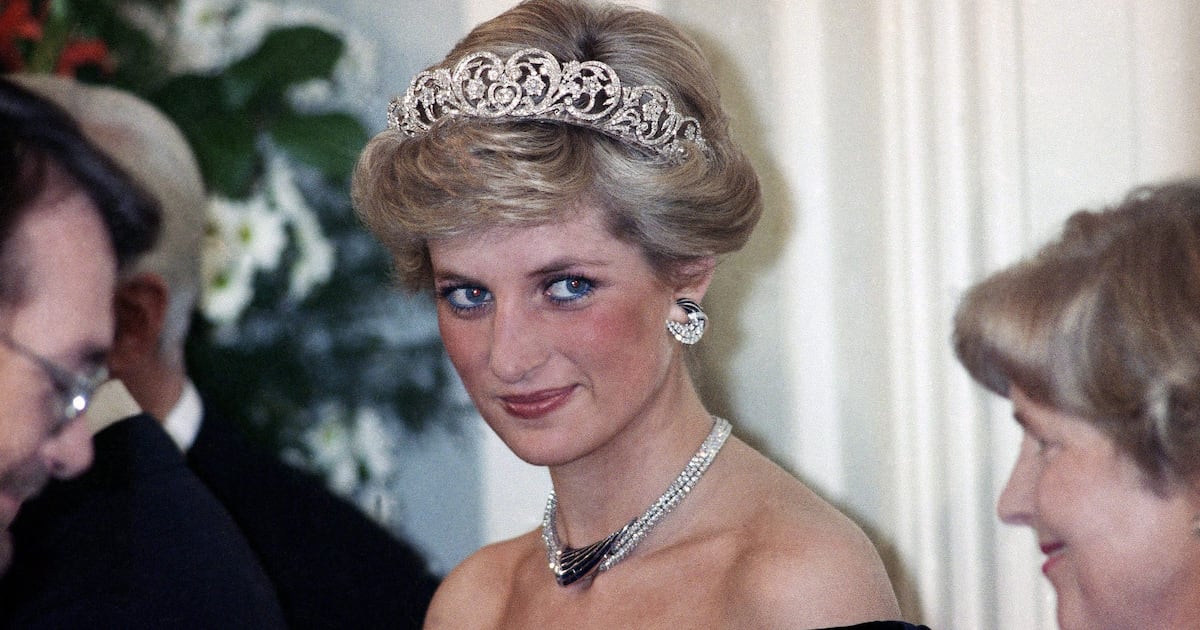Lifestyle
New Book Explores Who Failed Diana, Princess of Wales

Nearly 28 years after the tragic death of Diana, Princess of Wales, questions about who failed her continue to resonate. Investigative author Andy Webb presents a provocative examination of this enduring issue in his latest book, titled Dianarama: Deception, Entrapment, Cover-Up – The Betrayal of Princess Diana. Webb argues that the failures spanned across multiple institutions, revealing a systemic betrayal by the monarchy, the media, and those meant to protect her.
Webb’s book emerges at a time when the modern monarchy faces increasing scrutiny. With recent controversies surrounding Prince Andrew and ongoing discussions about Prince Harry and Meghan Markle, the revelations in Dianarama hit hard, reopening wounds in public consciousness. Webb suggests that Diana’s life was not merely a personal tragedy but a stark illustration of how powerful institutions treat vulnerable women.
Systemic Failures and Personal Betrayals
In his exploration, Webb paints a picture of Diana not just as a figure of royalty but as a young woman overwhelmed by the pressures of her position. He asserts that she was abandoned by the very institution she married into, relentlessly pursued by a media eager to exploit her vulnerabilities. Webb states, “Diana was targeted not for her power, but because she was powerless to resist the forces that benefited from her suffering.”
The book draws on years of research and firsthand accounts, with some indications that Prince William may have even contributed to its content. Webb’s commentary extends beyond historical analysis; it scrutinizes the dynamics of fame, gender, and power, delving into how these elements clashed in Diana’s life.
Webb highlights a critical point: the truth surrounding Diana’s struggles has not been fully recognized, a sentiment echoed in discussions about her experience with the media. He claims that the royal press teams and courtiers may have allowed harmful narratives to flourish, thereby changing the perception of her relationship with the Palace. This notion resonates with today’s discussions about the treatment of Meghan Markle, further illuminating the unresolved nature of Diana’s story.
The Role of the Media
Webb specifically critiques the British press, describing it as “the most relentless and unforgiving of Diana’s pursuers.” He argues that tabloids transcended mere reporting to actively shape the narrative around her life, stating, “The press did not just cover Diana; they manufactured her rise, her fall, and her tragedy.”
The book discusses the tragic car chase that led to Diana’s death as a grim culmination of unyielding media pressure. Webb contends that the damaging behavior of the press did not begin with the fatal incident in Paris. This assertion poses a challenging reality for a nation that cherishes a free press, yet has media outlets that thrive on royal scandals.
Webb also examines the involvement of the BBC in Diana’s story, particularly its controversial role in the infamous 1995 Panorama interview conducted by Martin Bashir. The Dyson Inquiry revealed that Bashir employed deceitful tactics to gain Diana’s trust, presenting her with fabricated documents to manipulate her into giving the interview. The inquiry concluded that the BBC had failed to uphold its standards of integrity and transparency, ultimately neglecting the serious concerns raised about the interview’s ethical implications.
The fallout from the Panorama interview continues to resonate, with Prince William stating that Bashir’s actions “played a big role in making my mother paranoid.” He has insisted that the interview should never be aired again, emphasizing the long-term damage done to Diana’s mental health.
While the BBC has issued apologies, the larger issue persists: when institutional reputation takes priority over individual welfare, who truly bears the responsibility? Webb does not attribute Diana’s suffering to a single entity but rather describes the monarchy as inflexible and more focused on self-preservation than on the well-being of individuals like Diana. He asserts, “Diana was supposed to fit into the monarchy. The monarchy didn’t adjust to fit Diana.”
As the royal family faces ongoing challenges, the themes presented in Dianarama remain relevant. The book arrives at a moment when public attitudes are shifting, making it a poignant reflection on the past and its implications for the present.
In closing, Webb reminds readers that Diana was a person first, not merely a symbol. Her story, marked by personal and institutional failures, reveals a complex interplay of vulnerability and power that continues to haunt society. He asserts, “Diana was human before she was a symbol. And the tragedy is that too many forgot that while she was still alive.” The narrative surrounding Diana is far from complete, serving as a reminder of the unfinished business that still lingers in the public consciousness.
-

 Science3 months ago
Science3 months agoToyoake City Proposes Daily Two-Hour Smartphone Use Limit
-

 Top Stories3 months ago
Top Stories3 months agoPedestrian Fatally Injured in Esquimalt Collision on August 14
-

 Health3 months ago
Health3 months agoB.C. Review Reveals Urgent Need for Rare-Disease Drug Reforms
-

 Technology3 months ago
Technology3 months agoDark Adventure Game “Bye Sweet Carole” Set for October Release
-

 World3 months ago
World3 months agoJimmy Lai’s Defense Challenges Charges Under National Security Law
-

 Lifestyle3 months ago
Lifestyle3 months agoVictoria’s Pop-Up Shop Shines Light on B.C.’s Wolf Cull
-

 Technology3 months ago
Technology3 months agoKonami Revives Iconic Metal Gear Solid Delta Ahead of Release
-

 Technology3 months ago
Technology3 months agoApple Expands Self-Service Repair Program to Canada
-

 Technology3 months ago
Technology3 months agoSnapmaker U1 Color 3D Printer Redefines Speed and Sustainability
-

 Technology3 months ago
Technology3 months agoAION Folding Knife: Redefining EDC Design with Premium Materials
-

 Business3 months ago
Business3 months agoGordon Murray Automotive Unveils S1 LM and Le Mans GTR at Monterey
-

 Technology3 months ago
Technology3 months agoSolve Today’s Wordle Challenge: Hints and Answer for August 19









